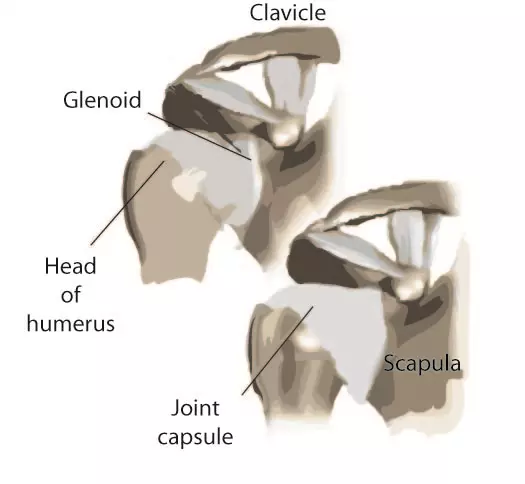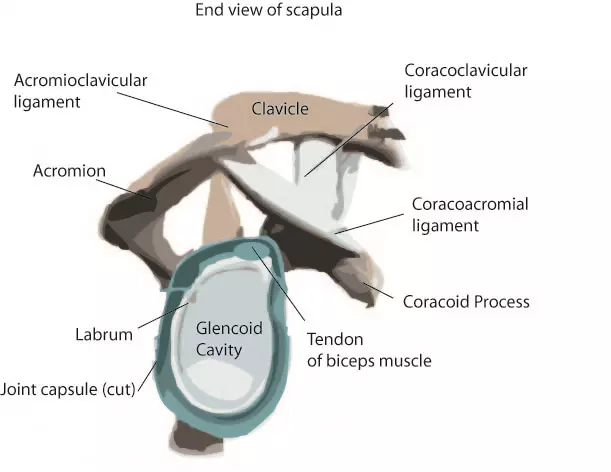- Home
- Patient Care
- Services
- Shoulder & Elbow
- Overview
- Shoulder Instability Information
- The Anatomy of the Shoulder
The Anatomy of the Shoulder
The shoulder is made up of two joints, the acromioclavicular joint and the glenohumeral joint. The acromioclavicular joint is where the acromion, a part of the shoulder blade (scapula) and the collar bone (clavicle) meet. The glenohumeral joint is where the ball (humeral head) and the socket (the glenoid) meet. The rotator cuff connects the humerus to the scapula and is made up of the tendons of four muscles, the supraspinatus, infraspinatus, teres minor and the subscapularis. Tendons attach muscle to bone. Muscles in turn move bones by pulling on the tendons. The muscles of the rotator cuff keep the humerus tightly in the socket. The socket, or the glenoid, is shallow and flat. It is rimmed with soft tissue called the labrum that makes a deeper socket that molds to fit the humeral head. Ligaments in the joint capsule also contribute to shoulder stability. The joint capsule surrounds the shoulder joint. It is a fluid filled sac that lubricates the joint. The ligaments tighten in certain arm positions, holding the ball in the socket.


NEXT TOPIC: Causes of Shoulder Instability